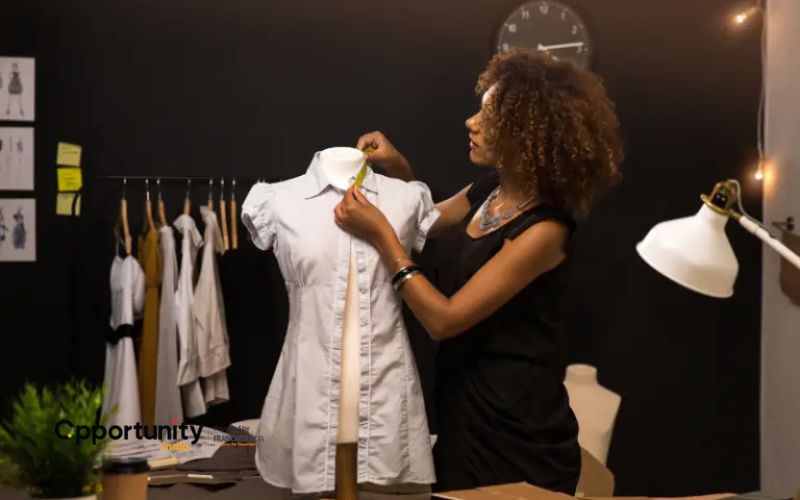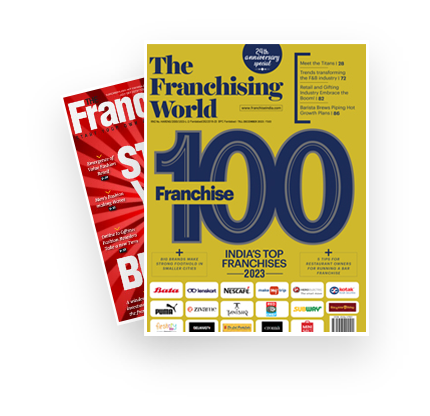
India’s fashion scene is booming again. With more people joining the middle class, earning better incomes, and shopping online, there’s a bigger demand than ever for clothes that are stylish, budget-friendly, and easy to find. Whether you are an aspiring entrepreneur or an experienced investor, the fashion industry has a broad range of business opportunities—from creating your own label to coupling with established brands through franchising.
Here, we discuss the most lucrative fashion business ideas and highest-performing franchise opportunities in India in 2025 based on market trends, investment information, and brand performance.
Why Fashion Is a Smart Business in 2025
Why fashion is a great business in 2025 is perhaps best understood if we first talk about what makes fashion so attractive this year:
1. Massive Market Potential
India's fashion industry is expected to expand at 11–12% every year, reaching ₹9.5–₹10.5 lakh crore by 2025. This expansion is spurred on by urbanization, youth-led consumption, and heightened fashion awareness among all sections.
2. Digital-First Consumer Behavior
The post-pandemic reality is online shopping. Fashion brands are using e-commerce, social media, and virtual try-on features to target and involve consumers more efficiently.
3. Rise of Sustainable and Inclusive Fashion
Customers are gravitating towards sustainable, ethically produced, and size-inclusive apparel. This trend is opening the door for niche players and socially responsible fashion startups.
4. Franchise-Friendly Environment
Most traditional fashion brands today come with plug-and-play franchise models with low barriers to entry, allowing easy market entry by entrepreneurs at lower risk.
Best Fashion Business Ideas in India (2025)

These are some of the most promising fashion business structures to explore this year:
1. Ethnic Wear Boutique
Traditional wear—sarees, lehengas, kurtas—is as much in vogue in India today. A boutique that sells handpicked ethnic collections with contemporary styling can be used for weddings, festivals, and casual wear.
2. Sustainable Fashion Label
Green fashion is catching on. Introducing a brand incorporating organic fabrics, upcycled fibers, and fair trade practices can build a premium, loyal clientele.
3. Plus-Size or Adaptive Clothing Store
There is increasing demand for inclusive fashion. A shop that deals with plus-size clothing or the disabled can meet a significant gap in the market.
4. Kid's wear and Maternity Fashion
Parents are investing more in fashionable, comfortable wear for kids and pregnant women. This market provides high repeat trade and emotional brand loyalty.
5. Fashion Accessories Brand
From belts and handbags to jewelry and scarves, accessories are high-margin items that can go along with any outfit. They're also perfectly suited for online-first companies.
6. Streetwear and Young Fashion
Gen Z and millennials are fueling growth in edgy, expressive fashion. A brand that is connected to pop culture, music, and social media is well-suited to succeed here.
7. Fashion Rental or Resale Platform
Keeping sustainability in view, fashion rental and resale websites are becoming increasingly popular. These business models come with affordability and environment-friendliness in one bundle.
Best Fashion Franchise Choices in India (2025)
According to the insights provided by FranchiseBazar, the following are the best fashion franchises to look out for this year:
1. BIBA
Segment: Women's Ethnic Wear
Investment: ₹20–₹30 lakhs
USP: High brand recall, colourful designs, pan-India reach
BIBA is a household brand in Indian ethnic wear. With a strong customer base and good footfalls, it's a perfect choice for Tier 1 and Tier 2 locations.
2. Van Heusen
Segment: Premium Formal and Casual Wear
Investment: ₹25–₹40 lakhs
USP: Supported by Aditya Birla Group, robust supply chain
Van Heusen combines style with professionalism, making it suitable for city dwellers and corporate districts.
3. FabIndia
Segment: Handmade Apparel and Lifestyle
Investment: ₹30–₹50 lakhs
USP: Ethically sourced, artisanal product, international appeal
FabIndia's emphasis on sustainability and rural craftsmanship makes it a socially responsible and profitable franchise.
4. Allen Solly
Segment: Smart Casuals and Workwear
Investment: ₹20–₹35 lakhs
USP: Youthful brand, strong marketing support
Allen Solly stands out for its vibrant colors and casual workwear, targeting young professionals and college students.
5. Peter England
Segment: Mass Menswear
Investment: ₹15–₹25 lakhs
USP: Value-for-money positioning, extensive reach
Peter England is a highly trusted menswear brand in India, best suited for high-traffic locations and price-conscious customers.
6. W for Woman
Segment: Urban Ethnic Wear
Investment: ₹20–₹30 lakhs
USP: Trendy fusion apparel, high online visibility
W combines traditional silhouettes with contemporary cuts, hence its popularity among urban women.
7. Blackberrys
Segment: Premium Menswear
Investment: ₹25–₹40 lakhs
USP: Formal, casual, and party wear all under one roof
Blackberrys provides an entire wardrobe solution for men, based on fit, fabric, and fashion-inspired designs.
8. Zudio
Segment: Affordable Fast Fashion
Investment: ₹15–₹20 lakhs
USP: Tata Group-backed, fashionable and affordable
Zudio is growing fast all over India, selling fashionable clothes at unbeatable prices—ideal for price-conscious markets.
9. Pantaloons
Segment: Multi-brand Fashion Retail
Investment: ₹40–₹60 lakhs
USP: Single destination for all age groups and fashion styles
Pantaloons provides an extensive range of brands and categories, which makes it best suited for large-format retailing.
10. Max Fashion
Segment: Family Fashion
Investment: ₹30–₹50 lakhs
USP: Fashion at affordable prices for men, women, and children
Max is reputed for its fashion-forward collections and high in-store experience, and hence it remains popular at malls and high-street properties.
What to Look Out for Before Selecting a Fashion Franchise
Before committing to a franchise agreement, consider these most important factors:
1. Brand Reputations
Select a brand that has strong consumer loyalty, good feedback, and steady marketing.
2. Location Strategy
Foot traffic is everything when it comes to fashion retail. Select high-visibility locations such as malls, high streets, or commercial areas.
3. Support and Training
Make sure the franchisor offers onboarding, stock control, visual merchandising, and marketing support.
4. Product Range and Seasonality
Fashion is cyclical. Select a company that has a wide, frequently changing range of products to make customers return time and time again.
5. Technology Integration
Seek franchises that provide POS systems, inventory monitoring, and digital marketing solutions to make operations more efficient.
New Trends in Indian Fashion (2025)
In order to remain at the forefront, be aware of these trends that are redefining the future of fashion in India:
1. Virtual Try-Ons and AR Shopping
Augmented reality is enriching the online shopping experience, lowering returns and raising customer satisfaction.
2. AI-Powered Personalization
AI is being employed by brands to suggest outfits, forecast trends, and tailor marketing—driving engagement and sales.
3. Sustainable Supply Chains
From sustainable materials to zero-packaging, sustainability is becoming a core value for brands.
4. Inclusive Fashion
Product design for all body shapes, genders, and abilities is no longer optional—it's the norm.
5. Influencer-Driven Marketing
Micro-influencers and content creators are playing a key role in shaping brand perception and driving sales.
Final Thoughts: Is Fashion Franchising Right for You?
The Indian fashion industry is dynamic, diverse, and full of potential. Whether you’re passionate about design, retail, or simply want to invest in a high-growth sector, fashion franchising offers a structured, scalable path to success.
With the right brand, location, and support system, you can create a business that's not only profitable but also stylish, sustainable, and future-ready.
SOME FREQUENTLY ASKED QUESTIONS
1. What kind of locations work best for fashion franchises?
High-footfall areas such as malls, high streets, commercial hubs, and Tier 2/3 city centers are ideal. Visibility, accessibility, and local demand are key factors.
2. How long does it take to break even in a fashion franchise?
Most franchises report a break-even period of 18–36 months, depending on location, brand strength, and operational efficiency.
3. Can I run a fashion franchise alongside another business?
Yes, many franchise models allow semi-absentee ownership, especially if you hire a trained store manager and follow brand SOPs.
4. What support do franchisors typically provide?
Support includes store design, staff training, inventory management, marketing campaigns, and tech tools like POS and CRM systems.

